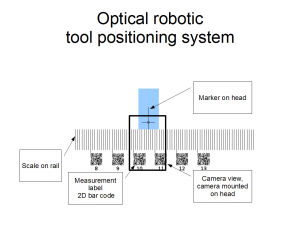Cheap Natural Gas Transportation Idea
Poor people in China transport natural gas in large plastic bags. If this could be made safe it’s a very low cost alternative to expensive pipelines. Natural gas could be quickly and cheaply distributed to places without infrastructure.
http://www.dailymail.co.uk/news/article-2108346/Chinese-villagers-carry-giant-balloons-stolen-natural-gas-heat-homes.html
Running underground pipes is a large investment. The small amount of natural gas these people would use doesn’t make that investment worth while.
The danger is if the gas is ignited. Three things are required to cause this danger, enough oxygen for ignition, natural gas mixed with oxygen, spark or flame.
A very simple solution is to put the natural gas bag inside another bag filled with carbon-dioxide. This would prevent ignition. CO2 could also be used to prevent an explosion while filling the bag with natural gas. First fill the bag with CO2 then use the natural gas to force out the CO2 into another empty bag of the same size. When the second bag is full you know the first bag is filled with natural gas. The process could then be repeated with the second bag.
Creativity and Innovation Can Be Learned
I make a distinction between creativity and innovation. I define innovation as “Profitably satisfying unmet desires.” Profitable doesn’t just mean money, it means better satisfying the desires of everyone involved. A new device or way of doing something won’t be accepted unless it makes things better for everyone who is needed to make it happen.
Creativity is newness without the need to satisfy a desire other than the maker. There is lots of creative stuff that is just horrible and no one likes it. This is why there is an expression “Starving artist”. There is a distinction between creating for no real purpose and creating to improve something. Another part of innovation is until you put the idea into use innovation has not occurred. You must actually do something to achieve innovation, not just have an idea.
The similarity between Creativity and Innovation is information. Both innovation and creativity start with an idea, information. The foundation of information is comparison. Two things are similar or different. Computers store and process information using a very simple comparison, same or different. All information can be encoded using that binary process.
The human mind doesn’t do this in a linear process, it makes hundreds or perhaps millions of comparisons at the same time. So what seems to be an idea “coming into your mind” is noticing a similarity or difference. You recognize some connection then put those things together and that is what we call creativity.
As is often the case, when you ask someone who is very talented how they do something, they can’t describe it. Often it takes someone else watching and recording each little step then asking “Why did you do that?” to figure out the process the talented person instinctively follows.
As an example how do you walk? You learned how to walk before you learned how to talk so you probably never thought about how to describe the process. How do you control the dozens of muscles to respond to your body shifting and falling forward then catching yourself and pushing off again? That natural “instinctive” behavior is something you learned how to do. And interestingly you can intentionally learn how to do it better.
The exact same thing applies to thinking and “creativity”. Everyone has some basic skill they acquired at an early age. You can develop and improve that skill through focused learning.
Predictive Innovation® teaches you the skills to be think so you are more creative and innovative.
3D Printer / CNC head positioning ideas
Ideas to make high precision low cost head positioning systems for 3D printer / fabricators / CNC machines. Precision stepper motors are expensive. What if you could use cheap analog motor? They could be very fast and cheap.
Electrical Resistance
Run a length of wire along each axis of the printer / fabricator / CNC and measure the resistance at the head position. Using a table of actual resistance measurements on the device could increase accuracy and even heat differences could be taken into account. This could be extremely accurate and low cost.
Optical
Optical is another approach, this is how mechanical mice and mane printers function. Using a digital camera with distance measurements on a scale printed from a long format printer could make the device very fast and accurate. Using optics the accuracy could increased fine precision even with cheap webcam sensors.

RF Triangulation
Mounting an RF transmitter on the head and antennas at the corners of the tracks could allow triangulation of the head to extremely high precision even over very large distances. This is the same technique used by GPS and cell phone towers. The precisions scales with size and frequency transmitted.
Electrical Balancing
Using opposing electrical currents to create a balance for any location along the rail. With the correct calibration this can be very accurate plus provide very fast movement.



 Predictive Innovation Training
Predictive Innovation Training Predictive Innovation: Core Skills Book
Predictive Innovation: Core Skills Book RoundSquareTriangle.com
RoundSquareTriangle.com